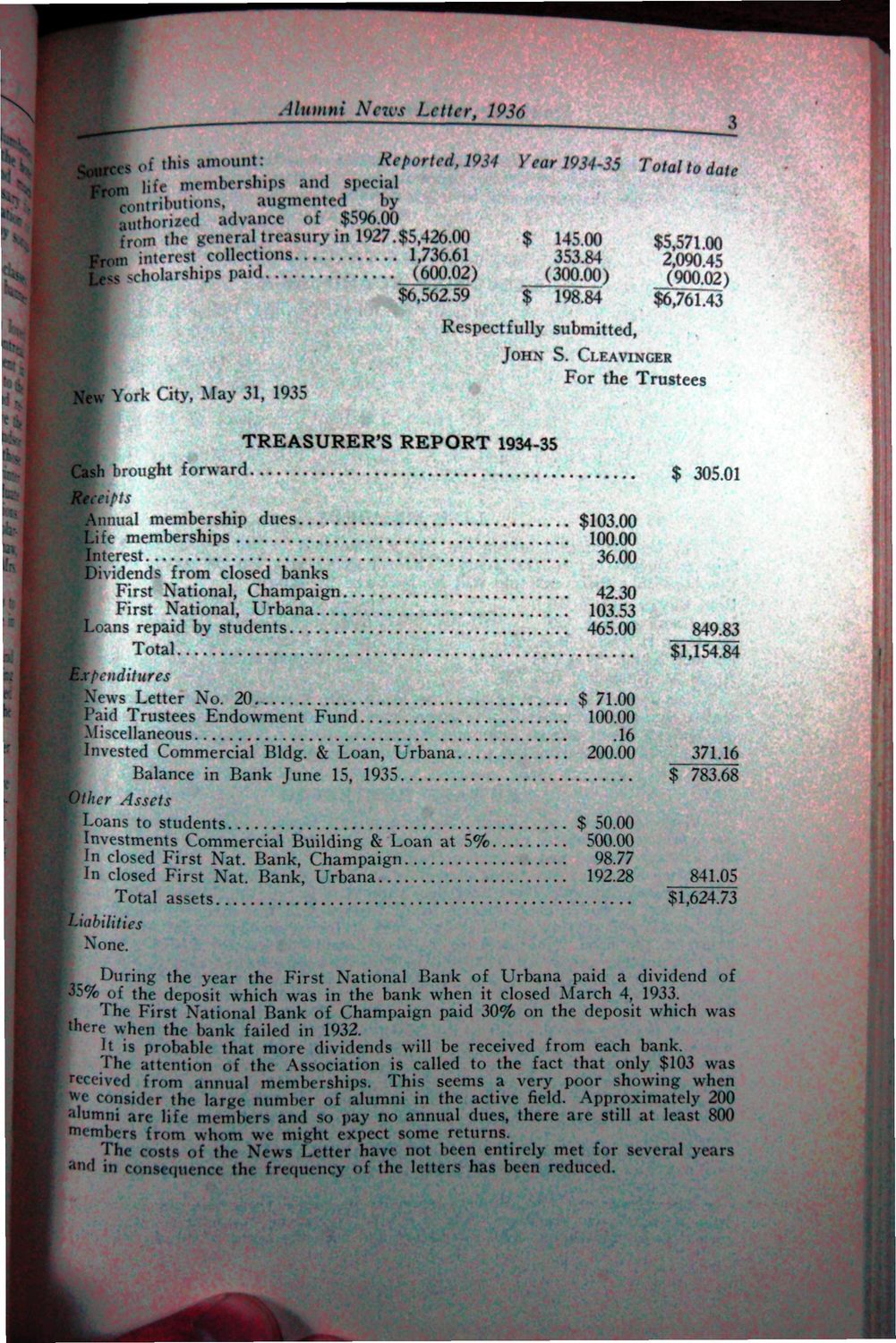| |
| |
Caption: UI Library School Alumni Newsletter - 22
This is a reduced-resolution page image for fast online browsing.

EXTRACTED TEXT FROM PAGE:
ffomm News Letter, 1936 Reported, 1934 fe rom K memberships and special contributions, augmented by authorized advance of $596.00 ^ • f r o m the general treasury in 1927.$5,420.00 From interest collections 1,736.61 (600.02) e < s scholarships paid urccs of this amount: Year 1934-35 Total to date f% City $6,562.59 145.00 353.84 (300.00) $ 198.84 $ $5,571.00 2,090.45 (900.02) $6,761.43 Respectfully submitted, J O H N S. CLEAVINGER F o r the Trustees T R E A S U R E R ' S R E P O R T 1934-35 Cash brought forward Receipts Annual membership dues Life memberships Interest Dividends from closed banks First National, Champaign J First National, Urbana Loans repaid by students Total Expenditures News Letter No. 20 Paid Trustees Endowment Fund Miscellaneous Invested Commercial Bldg. & Loan, Urbana Balance in Bank June 15, 1935 \Othcr Assets Loans to students Investments Commercial Building & Loan at 5% In closed First Nat. Bank, Champaign In closed First Nat. Bank, Urbana Total assets Liabilities $103.00 100.00 36.00 42.30 103.53 465.00 $ 305.01 849.83 $1,154.84 $ 71.00 100.00 .16 200.00 371.16 $ 783.68 $ 50.00 500.00 98.77 192.28 841.05 $1,624.73 t None. During the year the First National Bank of Urbana paid a dividend of 35% of the deposit which was in the bank when it closed March 4, 1933. The First National Bank of Champaign paid 30% on the deposit which was there when the bank failed in 1932. I It is probable that more dividends will be received from each bank. The attention of the Association is called to the fact that only $103 was received from annual memberships. This seems a very poor showing when *e consider the large number of alumni in the active field. Approximately 200 alumni are life members and so pay no annual dues, there are still at least 800 members from whom we might expect some returns. The costs of the News Letter have not been entirely met for several years and in Consequence the frequency of the letters has been reduced. Ik
| |